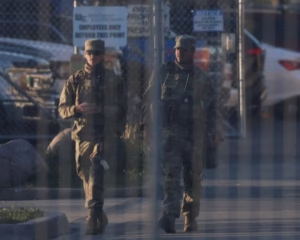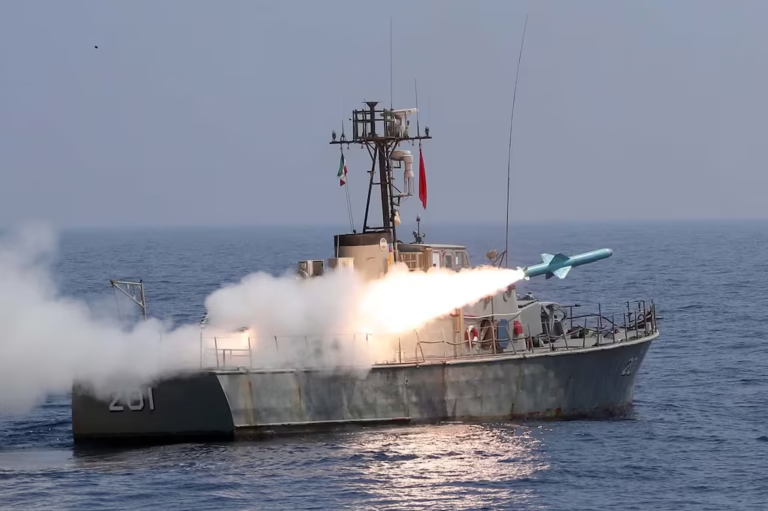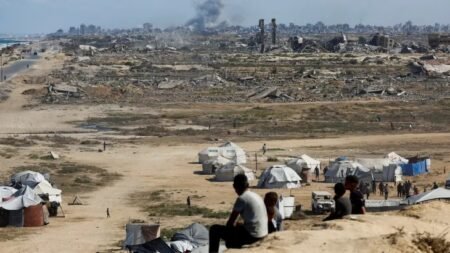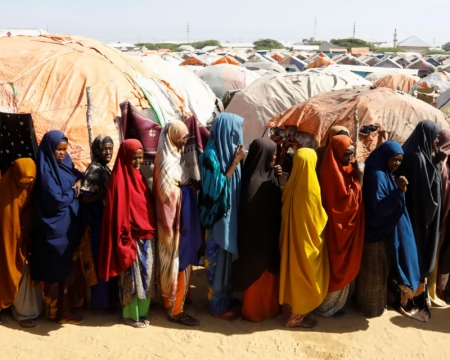Amid growing conflict in the Middle East, Iran has announced plans to shut down the Strait of Hormuz. This strategic move comes as tension increases with both Israel and the United States. With U.S. warships and naval air bases spread across the region, the focus now shifts to Iran’s naval strength and its ability to respond effectively.
Iran’s naval strategy aims to defend its coastal waters in the Persian Gulf and the Gulf of Oman. To do this, the country uses two main naval forces. The first is the regular Iranian Navy. The second is the naval wing of the Islamic Revolutionary Guard Corps (IRGC). Together, they form a powerful team that focuses on both traditional and unconventional warfare.
Iran’s regular navy manages large vessels like warships and submarines. It has over 8,500 members and operates more than 100 ships and submarines. On the other hand, the IRGC Navy specializes in fast, small attack boats and uses guerrilla-style tactics. It has around 20,000 personnel trained for quick-response operations in coastal areas.
According to the 2024 Global Firepower Index, Iran ranks 37th out of 145 naval forces worldwide. This rank may not place Iran among the top military powers, but it shows how the country has built a capable naval force despite international sanctions and limits on technology.
Iran has a variety of destroyers like the Zulfiqar, Shahan, and Zagros, which are equipped for missile attacks and surveillance missions. It also owns several frigates, such as the Alvand, Alborz, and Moudge classes. Some of these were built in Britain, while others were produced locally. These ships are used in medium-range naval operations.
One of Iran’s main strengths lies in its submarine fleet and drone-equipped ships. Though Iran does not yet have nuclear-powered submarines, it has long tried to develop them. In 2018, Iranian officials shared plans to build one, but international sanctions halted progress.
Still, Iran owns about 25 submarines from four main classes: Taregh, Fateh, Ghadir, and Nahang. These subs can deploy naval mines, launch anti-ship missiles, and carry out stealth attacks. They are designed for surprise strikes and coastal defense. In 2023, Iran claimed that a Fateh-class submarine forced the U.S. submarine USS Florida to surface — a sign, they say, of Iran’s growing undersea power.
Iran also operates several key naval bases across its territory. These include Bandar Abbas, Jask, Chabahar, Bandar Anzali, Kharg Island, and Imam Ali Naval Base. These bases give Iran geographic advantages in the Caspian Sea, the Persian Gulf, and the Gulf of Oman. With these bases, Iran can launch fast attacks and defend its waters effectively.
In August 2024, Iran’s navy added 2,640 new missile and drone systems. This includes cruise missiles designed to avoid radar detection. Iran has also built special ships to carry helicopters and drones. These include the Shahid Bagheri, Shahid Mahdavi, and Shahid Roudaki vessels. Each can carry more than a hundred drones and helicopters for surveillance or attacks.
Despite these upgrades, Iran’s navy is still smaller and less powerful than the U.S. fleet. American aircraft carriers like the USS Carl Vinson, USS Nimitz, and USS Harry S. Truman can project power over long distances and carry dozens of fighter jets. In direct comparison, Iran falls short in terms of size, technology, and airpower.
But Iran is not trying to match the U.S. in size or technology. Instead, it relies on asymmetric warfare. This includes using small, fast boats, hidden submarines, and drone ships to surprise or overwhelm larger forces. Iran’s experience in this kind of combat gives it a chance to disrupt enemy operations even without matching firepower.
With regional tension at a peak, Iran’s naval readiness is now under close watch. Its decision to block the Strait of Hormuz could affect global oil supplies and increase conflict risks. Whether or not Iran uses its full naval strength remains uncertain. But its growing force of submarines, drones, and coastal bases signals it is ready to play a major role in any future conflict.







